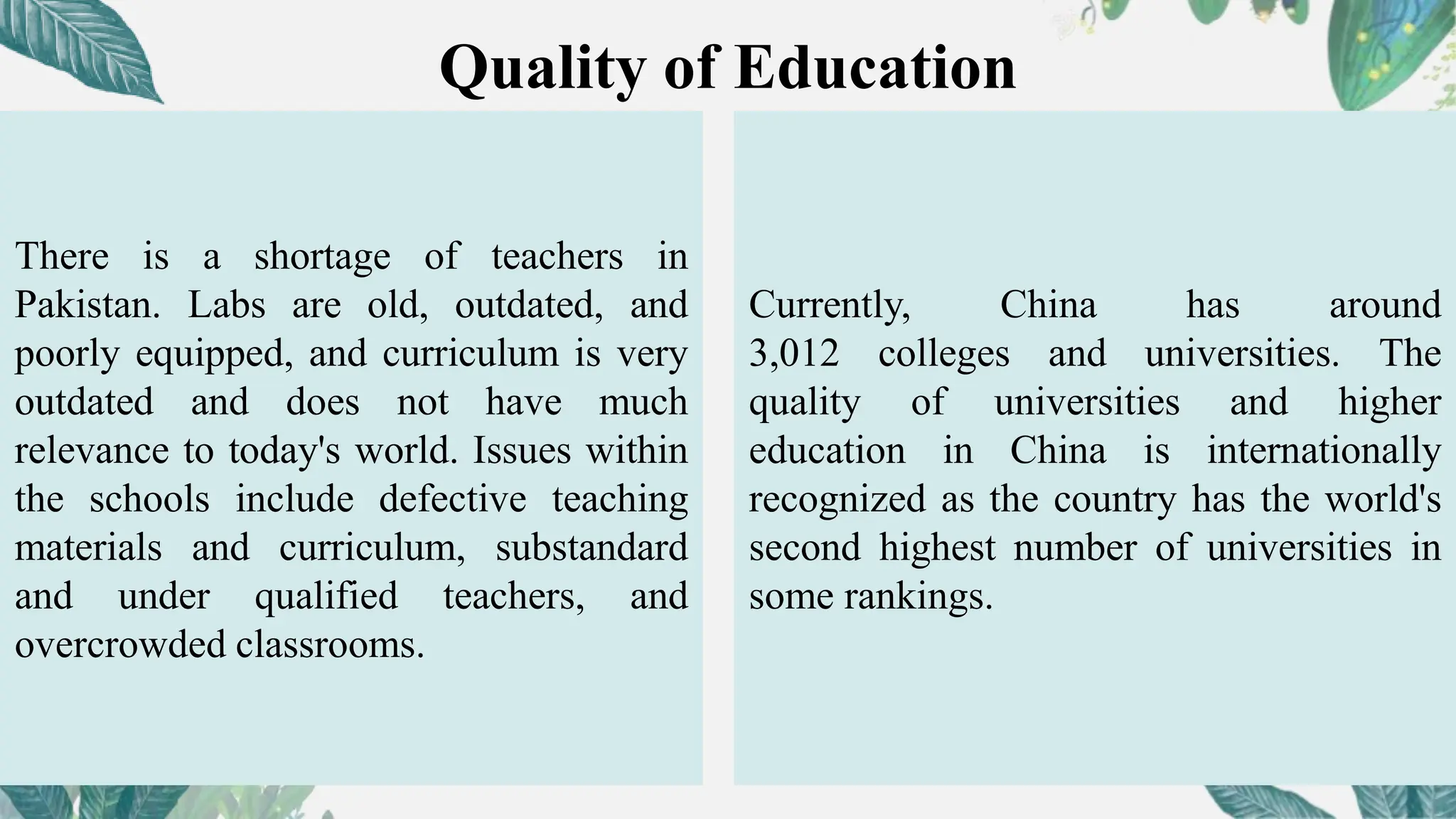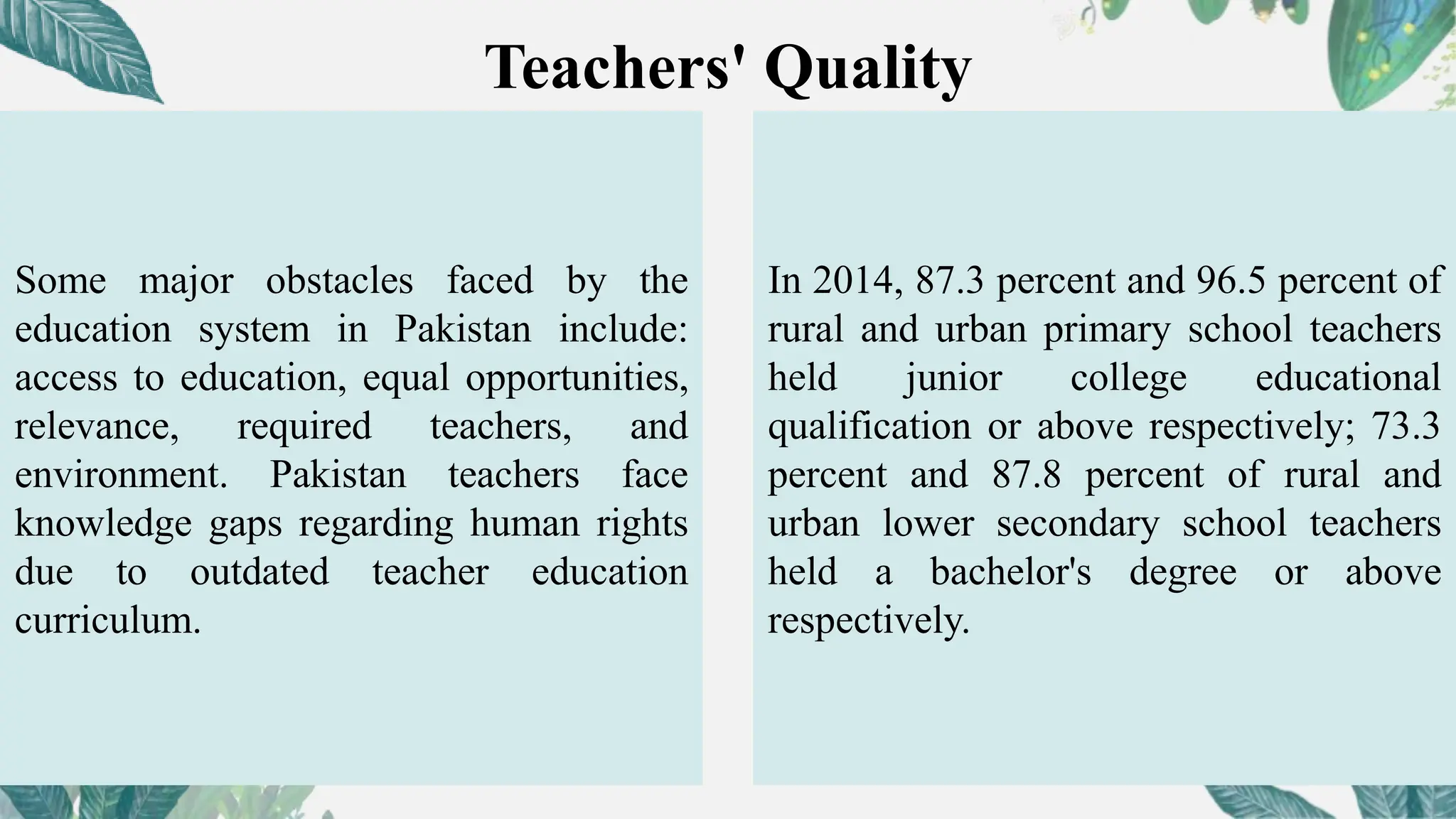The document compares the education systems of Pakistan and China, highlighting historical development, management bodies, and literacy rates. Pakistan's education faces challenges such as low literacy (around 66%), outdated curriculum, and teacher shortages, while China boasts a strong and internationally recognized higher education system with a literacy rate exceeding 90%. The analysis concludes that significant improvements in Pakistan's education infrastructure and quality are necessary for progress.




















